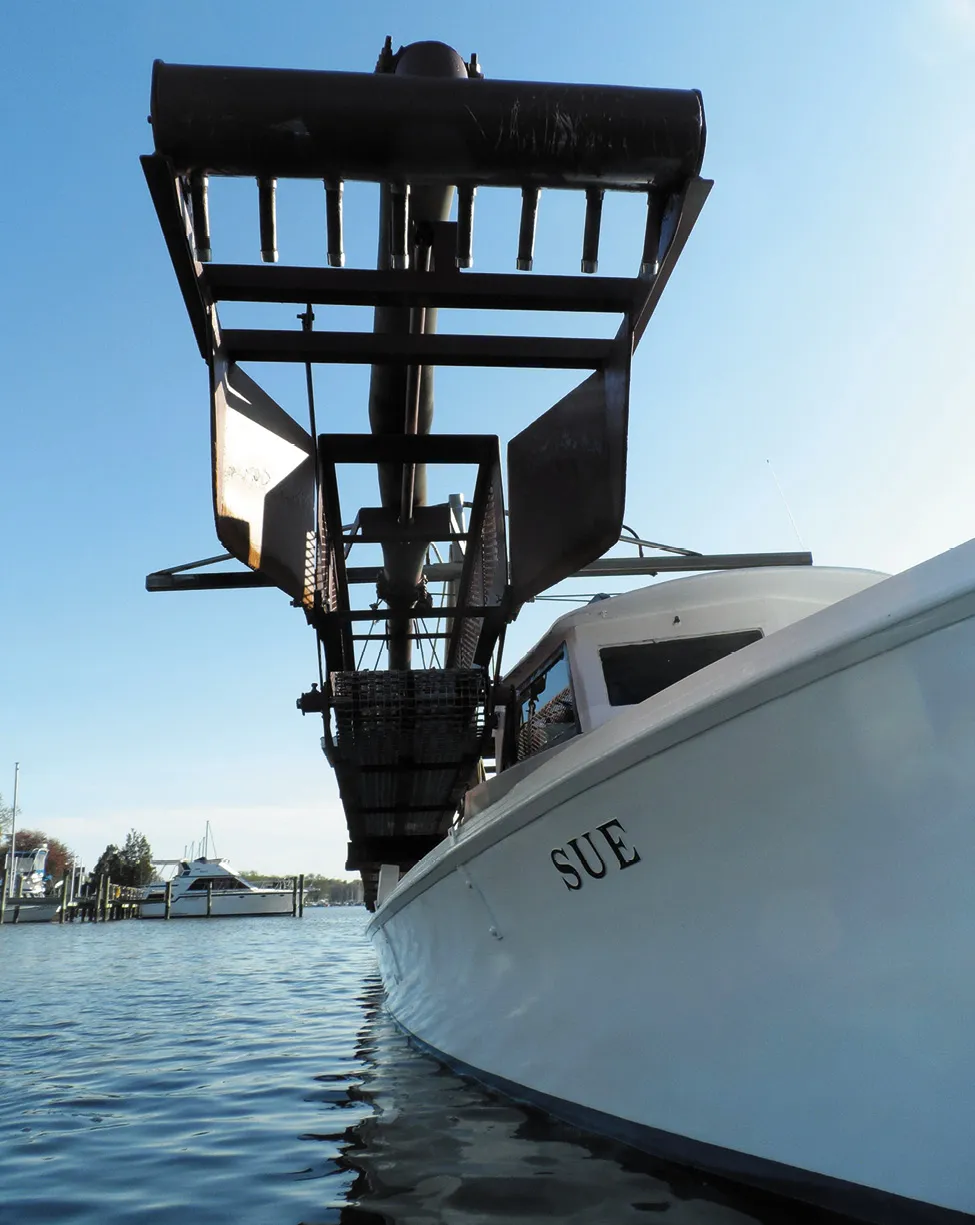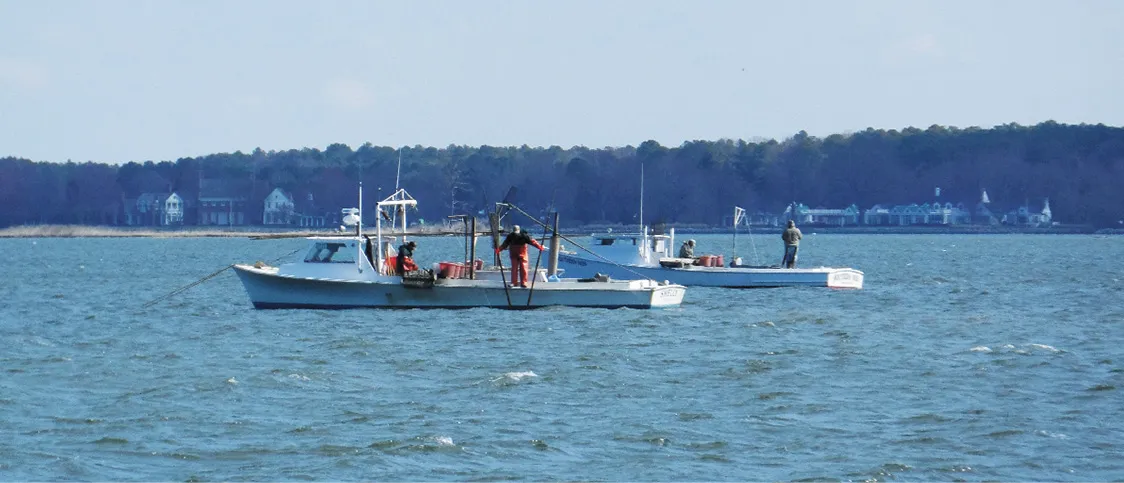One of the most common right-of-way situations that a sailing boat will encounter will involve fishing boats, so it is important to be aware of the types of fishing that occurs in the water you are sailing—and that includes fish traps, weirs, or pens. Although the latter don’t involve right-of-way questions, they present a navigational challenge.
TROLLING
Opening day on the Chesapeake Bay rockfish season means clouds of powerboats dragging as many as 16 lines, in spreads of as wide as 100 feet and running up to 150 feet behind the boat, moving at steady speeds of 2-3 knots. They don’t turn often, and when they do, the turns are very gradual, lest they tangle 1,000 feet of line and a lot of hooks. They resent sailors cutting through their spread and resist giving way, because a single sharp turn can result in hundreds of dollars in lost gear and hours spent sorting it out. I sometimes troll while sailing or kayaking, so I understand their needs, and out of courtesy when sailing I give them lots of room. Trolling for offshore game species is different, with trolling speeds of 6-12 knots, fewer lines, and narrower spreads. They can turn more easily, but still, I give them room. But according to COLREGs, vessels trolling are not engaged in fishing:

Rule 3 (d). The term “vessel engaged in fishing” means any vessel fishing with nets, lines, trawls, or other fishing apparatus which restricts maneuverability (interpreted by the USCG in to include fishing with pots or traps) but does not include a vessel fishing with trolling lines or other fishing apparatus which do not restrict maneuverability.
It is important to note that vessels that fail to display the proper fishing lights (or day shapes) cannot claim the privileges of a “vessel engaged in fishing.” In addition, a vessel in port or traveling to or from the fishing grounds must display only those running lights appropriate for a “power driven vessel.”
LOBSTER OR CRAB TRAPS
Lobster boats are engaged in fishing while hauling traps, typically 5-10 traps per string. Crab traps, on the other hand, are typically set individually but in rows, with a dozen traps set 26-100 feet apart. These boats are engaged in fishing when hauling traps but not when running back to harbor. When moving between strings or traps, they are engaged in fishing if they are displaying the appropriate day shape or lights.

I’ve never seen a lobster boat or crab boat display a day shape, so we are back to observing what we see and taking “any precaution which may be required by the ordinary practice of seamen.” It’s easy to give trap fishing boats plenty of room on open water but can be more challenging when the traps are set near a channel.
TROT LINES
A trot line is a line of baited hooks for crabs or fish. These are usually about 300 feet long, with anchors and floats at each end and drop lines with baits every 4-10 feet. We could not find a Coast Guard reference to trotlines, implying this is not “engaged in fishing,” but it’s easy to stay clear of a boat running a line (they travel in a straight line at speeds less than 3 knots). Generally, local boaters tend to treat trot-line fisherman as if they were engaged in fishing, like crabbers using traps. Again, these boats very seldom show the appropriate lights or day shape.
DRIFTING VESSELS
A boat that is drifting, whether a couple guys in a skiff with two lines over the side, a sailboat hove-to, and a container ship adrift 50 miles offshore waiting for an unloading berth, are all “underway.” They are not “not under command” (NUC), restricted in their ability to maneuver (RAM), or in procession of any special status. The fact that your sails are backed or that the engine is off are not relevant. For example, if you are hove-to and the wind is coming over your port side you are on port tack, and a sailboat on starboard tack is still stand on, as is a commercial fishing boat. Don’t think of drifting as similar to being anchored.

POSITIONING SYSTEMS
Minn Kota Spot-lock and similar autopilot systems integrate GPS with a trolling motor to hold a fishing boat nearly motionless over a prime fishing spot, typically over a wreck or shoal. Since there is no ground tackle, the boat is under way and mechanical propulsion is engaged. If you are sailing or motoring and there is a near motionless boat in front of you that may be using this system and so may in fact be the burdened vessel, the prudent thing to do is to steer a wide course around it anyway.







































